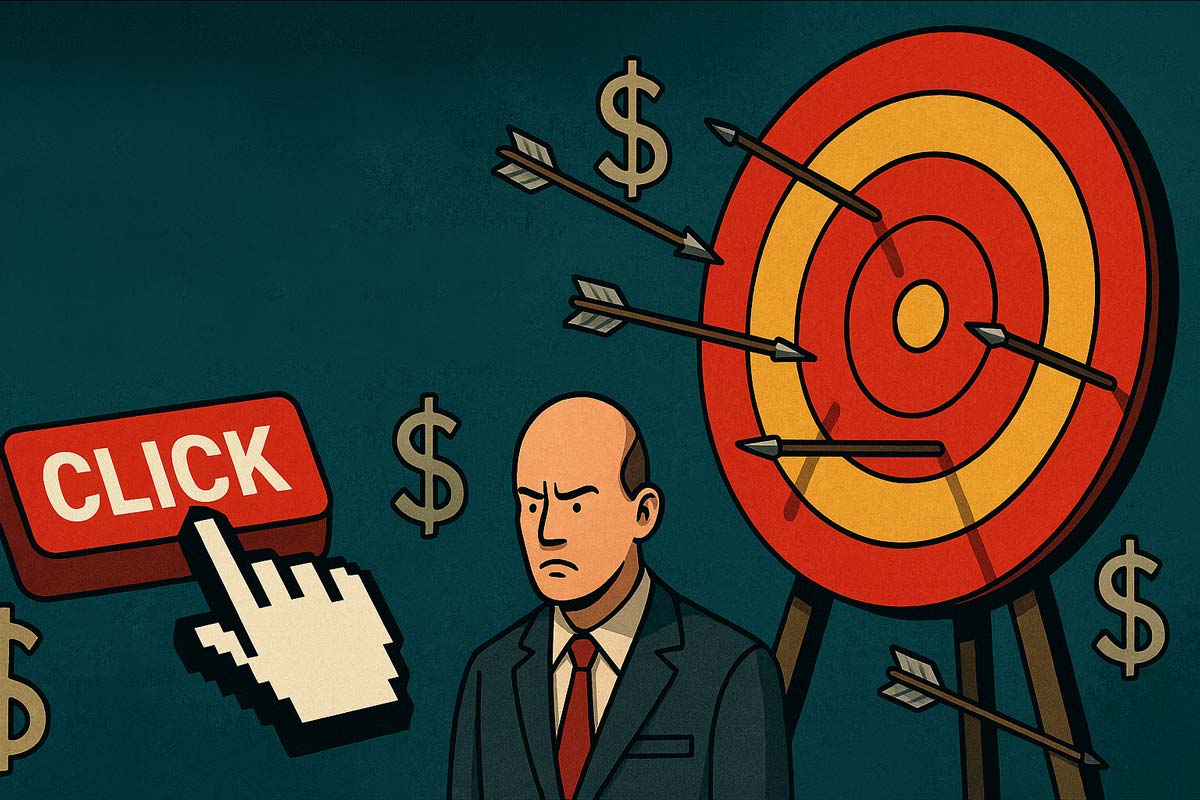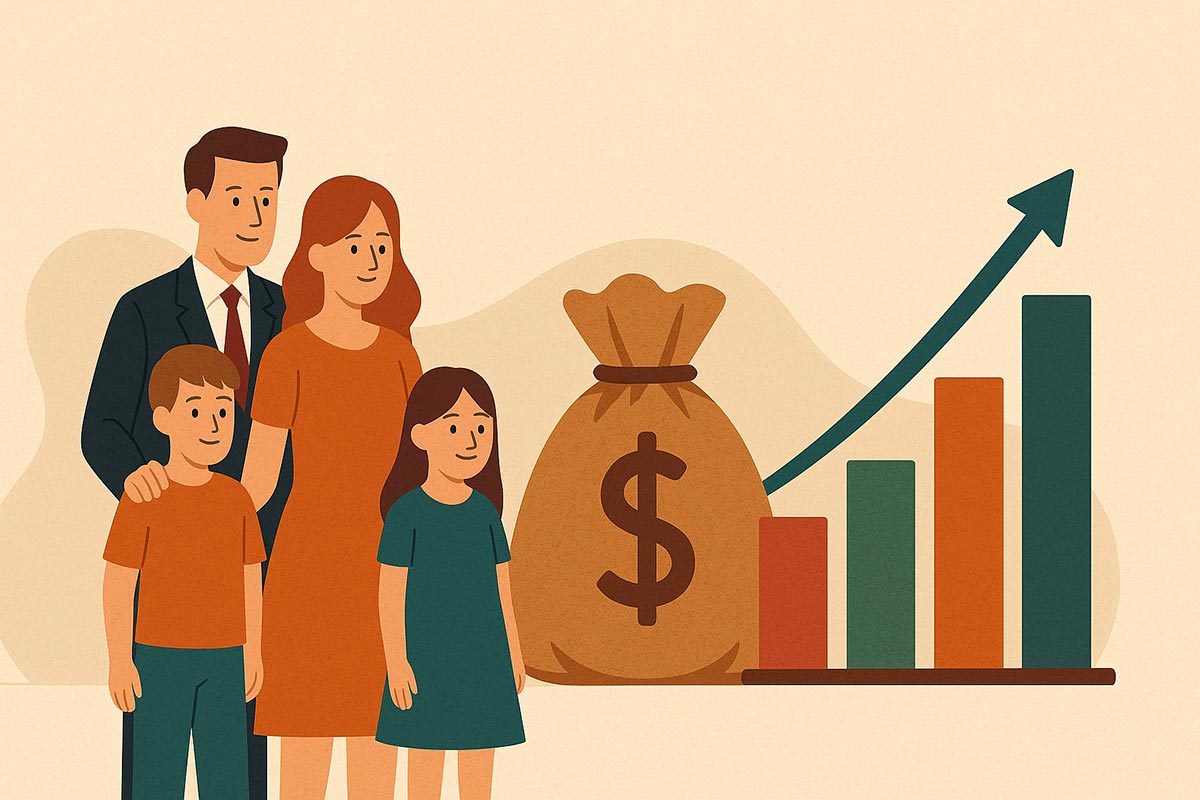Marketing has degenerated. Only imitation remains. In thirteen years in the investment business, I have yet to meet real marketers – those who see beyond advertising banners, know how meaning is born, and can embed a product into culture so that it lives in people’s minds for decades. Yes, I have encountered agencies with movie-level presentations and fees big enough to buy a small house. But a big price, unfortunately, does not mean quality.
There are exceptions. Coca-Cola managed to sell a summer soft drink in the winter, turning it into a symbol of New Year’s warmth, family comfort, and the magic of childhood expectation. That was a true creative hit: they weren’t selling sugary water – they were selling the feeling of an approaching holiday, a fragment of a childhood fairy tale people want to relive every December. That is marketing – when a product becomes part of a ritual, part of the collective unconscious. But such stories are rare, a craft of cultural codes.
Reality is far more mundane. Marketing today is hundreds of thousands of specialists who call maintaining advertising dashboards their job. They set up targeting, launch contextual ads, make landing pages for three hundred dollars, and call it strategy. You come asking for growth and get a “content plan.” You ask for meaning and get a spreadsheet of Instagram posts. This is not marketing. This is the craft of clicks and CTR, where the main KPI is the number of likes and transitions, not a living market response.
The problem is not technology. Tools are neither good nor bad. The problem is that the idea has disappeared, the work with the human being as a person has disappeared. Marketing has turned into cheap manipulation, into an endless stream of “only three spots left,” “thirty percent off until Friday,” into templated stories with GIFs and shouting headlines. This isn’t even advertising. It is visual trash that lives for one day and dissolves without leaving a trace in consciousness.
Real marketing has always worked with archetypes. It understood that people buy not a product but a feeling. Recall America of the nineteen-twenties, when tobacco companies invented the “Torches of Freedom” campaign and made women smoke on the streets of New York. It wasn’t about selling cigarettes. It was about selling a new image – an independent, free woman. Billions were built on this. It was social programming, a subtle play with symbols, where every detail served an idea.
Today’s “marketers” have lost that scale. They do not ask the main question: what new role in a client’s life does the product create? Why does a person need it at the level of dream, fear, status? There is no answer. But there are ready-made templates: sales funnels, auto-funnels, lead magnets. All this replaces meaning with motion, as if a doctor were treating a fracture with a bandage just to close a client’s request.
Look at the numbers. According to Statista, global spending on digital advertising in twenty-twenty-four will exceed six hundred billion dollars, but the conversion rate of average online campaigns has been falling for five years in a row. Billions go to banners that no one notices, to videos that people skip, to promotions no one remembers. The world is drowning in endless repetitions of someone else’s ideas.
This is especially evident in the CIS countries. Businesses pay but get nothing but air and chatter about A/B testing. Agencies sell “activity,” not results. The client agrees because “everyone does it this way,” and six months later is looking for a savior again. The cycle repeats: budgets lost, energy drained, faith in marketing as a growth tool gone. An endless déjà vu of new teams, new plans, new failures.
The scariest thing is that even large companies no longer seek meaning. It’s easier for them to report with a beautiful video than to create an idea that will change the habits of millions. Yet such ideas are what build markets. The car as a symbol of freedom. Coffee as a symbol of morning victory over the world. The phone as an extension of the self. That is marketing of a true level, where they sell not a product but a way of life.
Today we have only a service for selling clicks. A cannon barrage at sparrows where the sparrows have long flown away, the cannon is rented, the sight misaligned, and the shells are paid for by the client. And as long as this is called a “strategy,” business will lose money and the word “marketing” will lose meaning.
How did marketing reach such degradation? The answer is obvious: the industry has turned into a giant machine for spending other people’s budgets, where meaning is replaced by activity and results by appearances. In the early two-thousands, when digital came into fashion, it seemed that the internet offered business unprecedented opportunities: direct contact with the client, precise targeting, measurable efficiency. The first years really looked like a golden era. CTR broke records, the cost of a lead was negligible, and every new mailing brought a flood of sales. But then the inevitable began: the market became saturated, users learned to filter informational noise, ad auctions raised bids, and gradually the miracle turned into routine.
It was at this moment that a new type of agency appeared – not carriers of ideas but operators of advertising dashboards. Their goal is simple: pump budgets through algorithms, keeping the client on the hook with constant “campaigns” and endless “optimizations.” No one asks why the brand should exist at all, what role it plays in culture, how its values relate to real human needs. That takes time, costs money, and – most importantly – doesn’t scale into a neat Excel report. But the “launch” button works instantly.
An entire army of click-specialists has emerged, able to adjust numbers perfectly to any KPI. They do not care what a company sells – children’s toys, investment products, or insurance services. For them there is no difference between the meaning of “a journey toward a dream” and a “thirty-percent discount until Friday.” Only CTR, CPC, and ROI matter. This is how marketing stopped being an art and turned into bookkeeping of clicks.
I have seen how it works from the inside. For example, a company selling investment products approaches an agency with the request: “We need a market-entry strategy for Kazakhstan.” The answer: “We’ll make a content plan, launch targeted ads, and connect lead magnets.” The budget for the first month is ten thousand dollars: seven go straight to Facebook’s ad account, two to the agency’s fee, and one to design work. After three months comes the report: “We got twenty thousand clicks, five hundred subscriptions, ten meetings.” The problem is that not one subscriber became an investor. The money is gone, the boxes checked, but no strategy has appeared.
And this is no accident; it is a system. Most agencies survive by constantly circulating funds. Their business is not the client’s growth but the continuous feeding of advertising algorithms. That is why practically every marketing agency keeps dozens, sometimes hundreds, of clients: customers are always disappointed and leave, yet still end up in the “portfolio.” The more impressions, clicks, and tests, the longer the contract lasts. A real growth strategy is unnecessary – and even dangerous. A true strategy could lead to quick success, after which the client might leave, knowing exactly what to do next on their own. Agencies do not want that. What they need is endless “work,” an eternal process instead of a result.
Psychological mechanisms make the situation worse. People are afraid to make big strategic decisions. It is easier to delegate them to someone who promises quick numbers. Agencies know this and sell “risk management”: many small campaigns instead of one big breakthrough. To the client it feels like progress – weekly reports, diagrams, metrics, KPIs. In reality it is imitation, like a builder who, instead of a house, shows a stack of pretty blueprints and says, “Look how we’re moving forward.”
Add to this the dependence on advertising monopolies. Facebook, Google, TikTok have built entire ecosystems that live on commissions from ad spending. The more clicks, the higher their revenue. Agencies have become intermediaries in this ecosystem, feeding the algorithms. Meaning, ideas, brand uniqueness do not interest them. Only dashboard statistics matter.
Marketing has finally begun to resemble a casino. The client puts in money. The system places bets. Someone wins in the first months and thinks they’ve found the formula. But over time the algorithms raise the cost per click, the audience burns out, and expenses rise. To maintain performance, agencies increase budgets. The game goes on. Real growth does not.
This is especially vivid in countries without a solid marketing tradition. In the post-Soviet space a “strategy” often means copying Western templates. At best they translate foreign case studies, lightly adapt them to the local market, and present them as unique ideas. At worst they simply buy traffic. As a result, businesses compete not in meaning but in click price. It is a contest without winners.
Recall the classics of marketing that almost no one touches today. In the nineteen-fifties De Beers coined the slogan “A diamond is forever,” and they did not just sell stones. They created a ritual – an engagement ring as an essential symbol of love. In twenty years the price of diamonds multiplied several times, and an ordinary mineral became a symbol of eternity. That is marketing as the creation of a cultural code.
Today a typical marketing “breakthrough” is just another discount mechanism or a mass flash mob with a one-time effect. The brand does not grow stronger, gain depth, or form habit. It merely flashes and disappears.
As an investor, I see a direct analogy with financial bubbles. There are assets that grow because people believe in them – they have an idea, a foundation, a clear driver. And there are Ponzi schemes that survive only through constant inflows of new money. Modern marketing increasingly resembles the latter. As long as the budget flow continues, the system lives. As soon as the flow stops, everything collapses.
The paradox is that business has grown used to this game. Entrepreneurs have built constant “activity” expenses into their budgets and consider them as inevitable as utility bills. Yet the real task of marketing is to reduce dependence on spending by turning the company’s name into a self-sustaining magnet for clients. But that task benefits neither agencies nor ad platforms.
To stop feeding advertising algorithms and start building a brand that lasts for decades, one must understand that marketing is about the idea, about strategic vision, about slow but inevitable work with human meanings. Until a company learns to answer the question “Why do we matter to the world?” all its budgets will dissolve like water in sand.
The first step is to drop the illusion that traffic and sales can simply be “bought.” Any purchase of attention is only a starting point. True growth begins where there is an inner story that people are willing to share themselves, without a paid click. Apple spent decades building a cult of simplicity and personal freedom through technology, turning customers into brand missionaries. Tesla never advertised itself head-on, but it sold the idea of a future in which cars do not kill the planet. Starbucks taught people to pay for the atmosphere of a “third place” between home and work. That is not about a “two cappuccinos for one” promotion. It is about creating a habit woven into daily life.
The second step is to understand that strategy is not born in a presentation. A true strategy is a decision that defines a company’s behavior for years ahead. It is the choice of values that will not be compromised even in a crisis. It is the courage to refuse quick money for the sake of long-term reputation. Many businesses in the CIS stop here: it is easier to cut prices than to explain value. But the world is already oversaturated with cheapness. People are looking for quality, for a story, for an idea worth paying for.
The third step is to build your own media rather than rent someone else’s. Every company must become a publisher: to have its own communication channel, its own audience base, its own voice. This can be a podcast, a magazine, a club, an educational project – any format where customers encounter the brand’s personality. When people wait for your content instead of stumbling upon it by accident in a feed, you break free from the slavery of advertising dashboards. An example? Patagonia’s travel and nature magazine has long since become a standalone media brand that shapes the company’s values more powerfully than any advertising campaign.
The fourth step is to build trust through the product, not just through words. Real marketing always rests on reality. If the product is weak, no strategy will save it. Marketing cannot be a cover for poor quality, because deception is expensive. The legendary Japanese concept of kaizen – continuous improvement – still keeps companies like Toyota at the top of trust rankings. Their advertising is essentially a demonstration of genuine progress, not a fireworks show of pretty pictures.
There is also a fifth step, and it is the hardest: a long horizon. True marketing thinks in decades. It builds brand capital that can be passed down as an inheritance. This approach requires patience and resilience, but it is exactly what creates businesses capable of surviving changes in technology and generations. Louis Vuitton does not sell handbags – it sells a story that has lasted for more than a century. Rolex does not sell watches – it sells the symbol of time that never ages. Their advertising is only an echo of a long journey.
To counter all this with template agencies, there is only one way: independent thinking. Stop buying ready-made “funnels” and stop fearing to go against mass practices. Yes, you will have to think more, dive deeper into your product, invest in audience research instead of the next ad wave. But the result is worth it.
There is another key factor entrepreneurs underestimate – educating the customer. When a business invests in teaching its audience, it creates a new generation of buyers who truly understand and value the product. Investment companies that teach financial literacy eventually gain the most reliable, long-term clients. They create a market instead of chasing random money.
Finally, it is time to stop believing in the myth of “fast sales.” No sustainable brand has ever been born in a month. Even famous “viral” successes are the result of long preparation invisible to the public. An established brand is like a complex musical chord: it cannot be played with a single note; it is formed from dozens of correct steps taken at the right time and in the right sequence.
When I say this at meetings with entrepreneurs, I see two kinds of reactions. Some nod but keep looking for a magic “launch” button. Others stay silent but already understand: it is time to change their approach. The latter have a chance, because they are ready to transform not only their marketing but also their mindset – from short-term to strategic.
To conclude, here is the main point: marketing is not dead. What has died is the imitation we have been calling by that name. True marketing is alive, but its path has become harder. It is the path of idea, product, meaning, and long-term play. It is work in which clicks are only a tool, not the goal. It is the ability to create value that does not depend on advertising algorithms and does not disappear with the next trend.
Until businesses return to this simple but courageous truth, budgets will keep sinking into the sand, and the word “marketing” will remain a synonym for an expensive illusion. But those who dare to step out of this circle will become the new players who define tomorrow’s market – not because they found a magic button, but because they built meaning.



